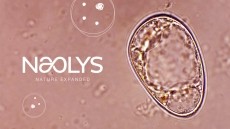Predicting hair loss: L’Oréal files patent on alopecia prognosis, diagnosis and treatment
International beauty major L’Oréal has developed a method to identify the molecular signature of a person’s scalp in a common alopecic state, enabling prognosis and diagnosis, along with the development of efficacious cosmetic treatments for such hair loss.
Writing in its international patent, L’Oréal said it had developed a method for the in vitro prognosis and/or diagnosis of a “common alopecic state of the scalp” by measuring the expression level of very specific genes* involved in the intercellular junctions of the scalp and/or hair follicle. It also outlined an in vitro method to evaluate the efficacy of treating a common alopecic state, including testing cosmetic treatments like hair lotions, gels, shampoos and conditioners made using gene modulators and certain active compounds.
*Genes identified by L’Oréal: CDH1, ACTB, ACTBL2, TUBB, TUBB2A, GSN, MY03B, MY05B, MY06, DSG2, DSG3, DSG4, DSC2, GJB2, GJA1, GJB6, GJA3, TJP2, CLDN8, CLDN10, CLDN19, and optionally CTNNB1 and CTNND2
L’Oréal said the prognosis, diagnosis and treatment methods specifically related to common alopecia caused by disruptions of the hair cycle, as opposed to immune alopecias like alopecia areata or spot baldness, alopecia universalis and alopecia totalis. Assessment and treatment could therefore be used for the likes of androgenetic alopecia, traction alopecia, female pattern hair loss, cicatricial alopecia, chemotherapy-induced or radiotherapy-induced alopecia, telogen effluvium, stress-related alopecia, seasonal alopecia, age-related alopecia and micro-inflammatory alopecia.
![L'Oréal wants to specifically direct its methods towards predicting androgenetic alopecia in men - known as male-pattern baldness [Getty Images]](/var/wrbm_gb_food_pharma/storage/images/_aliases/news_large/media/images/news-photogalleries/801060/predicting-hair-loss-l-oreal-files-patent-on-alopecia-prognosis-diagnosis-and-treatment/15798342-1-eng-GB/Predicting-hair-loss-L-Oreal-files-patent-on-alopecia-prognosis-diagnosis-and-treatment.jpg)


![L'Oréal's Luxe division performed especially well, with 'remarkable success' in fragrances, according to the company's CEO [Getty Images]](/var/wrbm_gb_food_pharma/storage/images/_aliases/wrbm_tiny/media/images/news-photogalleries/801060/l-oreal-reports-historic-full-year-for-2021-net-profit-soars-29/15798270-1-eng-GB/L-Oreal-reports-historic-full-year-for-2021-Net-profit-soars-29.jpg)
![L'Oréal wants to specifically direct its methods towards predicting androgenetic alopecia in men - known as male-pattern baldness [Getty Images]](/var/wrbm_gb_food_pharma/storage/images/_aliases/wrbm_tiny/media/images/news-photogalleries/801060/predicting-hair-loss-l-oreal-files-patent-on-alopecia-prognosis-diagnosis-and-treatment/15798342-1-eng-GB/Predicting-hair-loss-L-Oreal-files-patent-on-alopecia-prognosis-diagnosis-and-treatment.jpg)
![L’Oréal says there is huge room for growth across South Asia Pacific with emerging demographics and online selling channels poised to take off. [L'Oréal]](/var/wrbm_gb_food_pharma/storage/images/_aliases/wrbm_tiny/media/images/news-photogalleries/801060/l-oreal-exclusive-why-beauty-s-online-boom-is-far-from-plateauing/15798378-1-eng-GB/L-Oreal-exclusive-Why-beauty-s-online-boom-is-far-from-plateauing.jpg)
![Academic research on incorporating live bacteria into topicals has widened, but industry moves in the space still face major hurdles [Getty Images]](/var/wrbm_gb_food_pharma/storage/images/_aliases/wrbm_tiny/media/images/news-photogalleries/801060/l-oreal-scientist-live-bacteria-the-dream-for-skin-microbiome-npd/15798396-1-eng-GB/L-Oreal-scientist-Live-bacteria-the-dream-for-skin-microbiome-NPD.jpg)

![Fancy Face offers a range of premium makeup and skin care items online and via its own-brand boutique store [Image: Fancy Face]](/var/wrbm_gb_food_pharma/storage/images/_aliases/wrbm_medium/publications/cosmetics/cosmeticsdesign.com/headlines/business-financial/fancy-face-canada-beauty-services-firm-eyes-retail-expansion-and-own-store-push/16044656-1-eng-GB/Fancy-Face-Canada-beauty-services-firm-eyes-retail-expansion-and-own-store-push.jpg)
![L'Oréal's Product Impact score system provides consumers detailed information on the environmental and social impact of a product, scoring it A to E [Image: L'Oréal]](/var/wrbm_gb_food_pharma/storage/images/_aliases/wrbm_medium/publications/cosmetics/cosmeticsdesign.com/article/2022/12/15/l-oreal-usa-garnier-launches-product-impact-labelling-initiative-in-the-us-for-scores-on-environmental-social-impacts/16028045-1-eng-GB/L-Oreal-USA-Garnier-launches-Product-Impact-labelling-initiative-in-the-US-for-scores-on-environmental-social-impacts.jpg)
![Estée Lauder Companies is due to close its acquisition of fashion major Tom Ford early next year [Getty Images]](/var/wrbm_gb_food_pharma/storage/images/_aliases/wrbm_medium/publications/cosmetics/cosmeticsdesign.com/headlines/business-financial/estee-lauder-companies-tom-ford-acquisition-for-2.3bn-to-increase-competition-in-beauty-says-globaldata/16000961-1-eng-GB/Estee-Lauder-Companies-Tom-Ford-acquisition-for-2.3bn-to-increase-competition-in-beauty-says-GlobalData.jpg)













